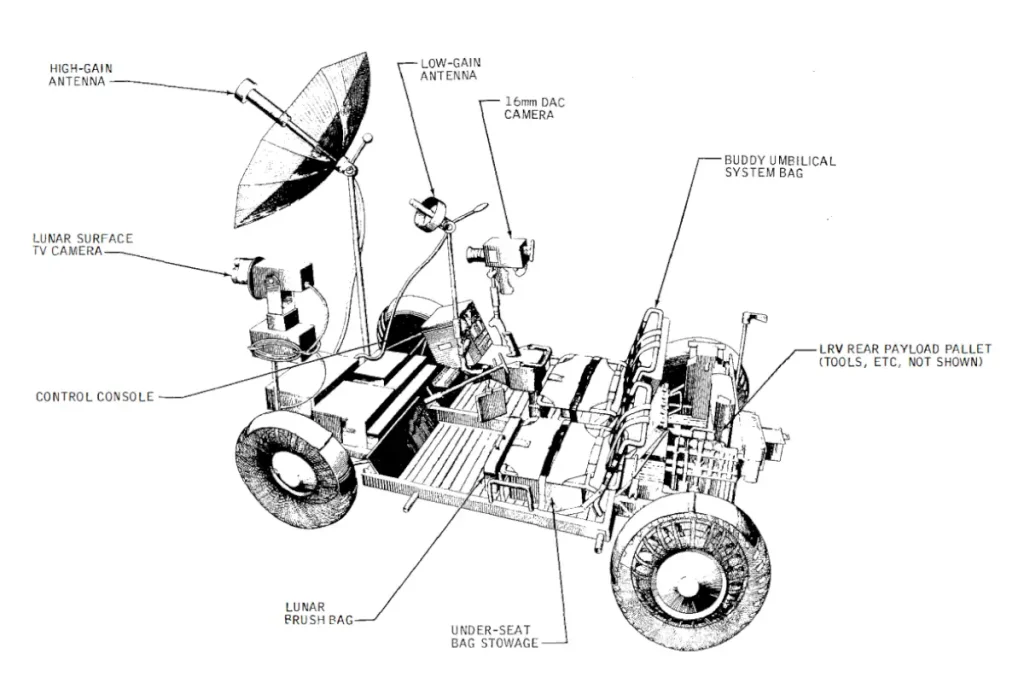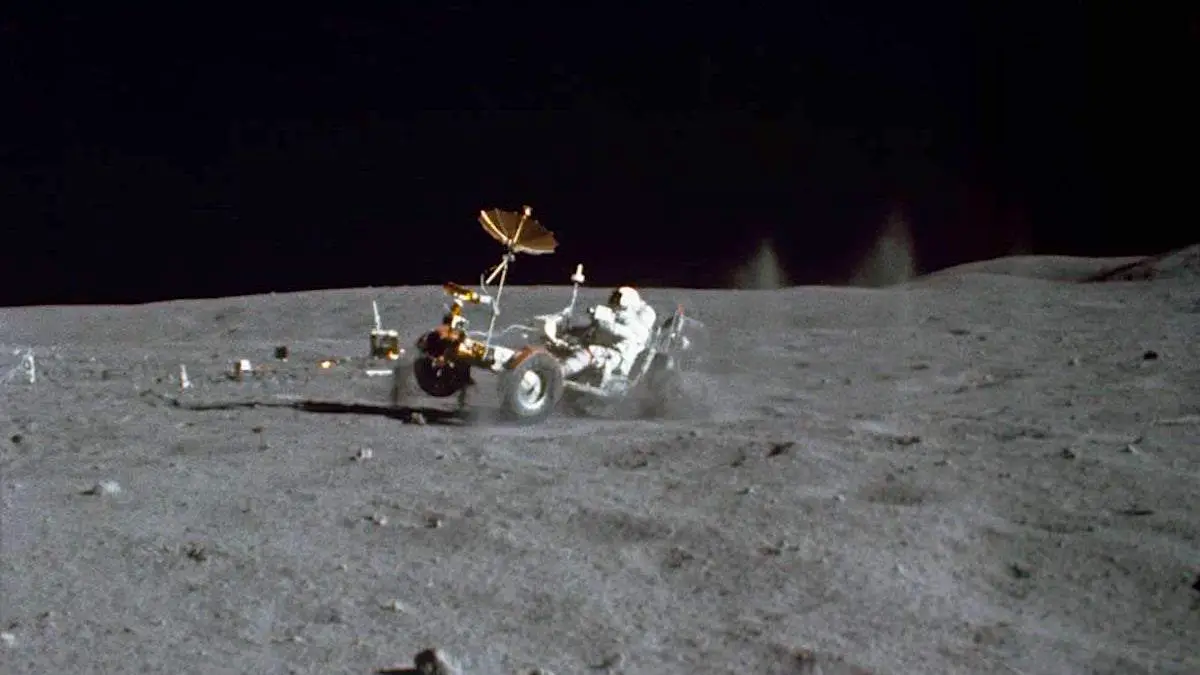The Lunar Roving Vehicle (LRV), an engineering feat designed for lunar exploration, played a crucial role in the later Apollo missions. Given its delicate structure and the unique challenges of the Moon’s surface, astronauts were instructed to handle the LRV with utmost caution. The vehicle, powered by a modest 1 horsepower, initially had a speed limit of 8 mph (12.87 km/h) to ensure safety during lunar excursions, recognizing that mechanical or medical help was a quarter of a million miles away on Earth.
Despite these limitations, the Apollo 17 mission on December 13, 1972 (EST), saw astronauts Eugene Cernan (driver) and Harrison Schmitt (passenger) push the boundaries of lunar vehicular travel. During their third and final EVA (Extravehicular Activity), near the “Sherlock” block field, about 1 km east of their landing site, they reached a speed of 18 km/h (11.18 mph) in their Lunar Rover (LRV-3), as recorded in their communication transcripts.
The record speed achieved by Cernan and Schmitt was facilitated by their downhill trajectory, coupled with the additional weight of the Moon rocks they were carrying.
This achievement surpassed the previous lunar speed record of 17 km/h (10.5 mph), set by Apollo 16 astronauts John Young and Charles Duke during their third and final EVA on April 23, 1972.
![Eugene Cernan driving the Lunar Roving Vehicle [Apollo 17]](https://cdn-0.ourplnt.com/wp-content/uploads/2023/12/Eugene-Cernan-Lunar-Rover-Vehicle-Apollo-17-1024x1024.webp)
This record-setting moment, captured in the Apollo 17 transcripts, is a testament to the capabilities of the LRV and the skill of the astronauts. An iconic image (see the image below) from a similar moment shows Apollo 16 astronaut John Young, creating a cloud of lunar dust, the LRV briefly airborne, as he approached the then-record speed of 10.5 mph (16.9 km/h). These feats not only highlight the LRV’s design excellence but also mark the lunar speed record as the off-world speed record, a remarkable achievement in the history of space exploration.


December 13 in Science, Technology, Astronomy, and Space Exploration history
- 1972: Lunar Rover Vehicle Speed Record was Broken
- 1972: The Last Moonwalk was Performed
Sources
- “Lunar Speed Record” on the Guinness World Records website
- Lunar Roving Vehicle on Wikipedia
- Space Shuttle Endeavour’s Touchdown Meets Columbia’s Salute [An amazing photo from the past] - February 29, 2024
- Moon Landings: All-Time List [1966-2024] - February 23, 2024
- From Orbit to Ordinary: 10 Earthly Applications of Space Technology - January 23, 2024
